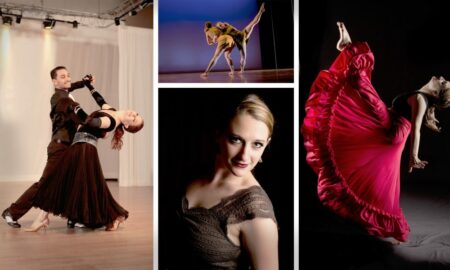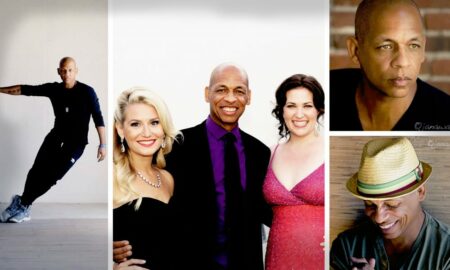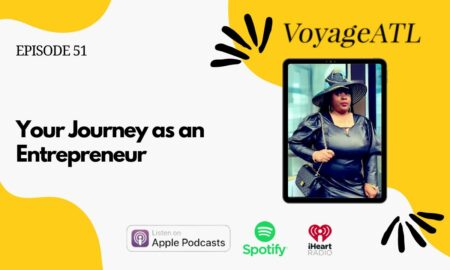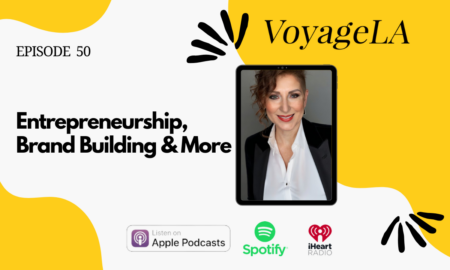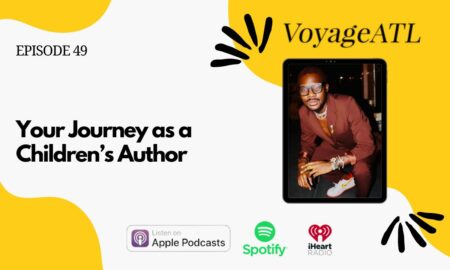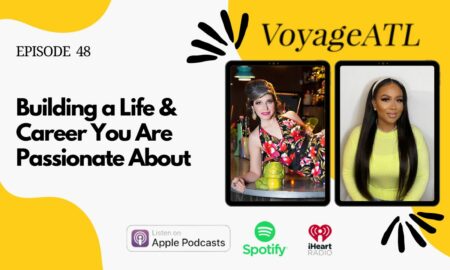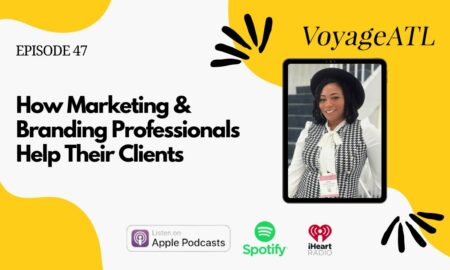

Today we’d like to introduce you to Michelle Laxalt.
Every artist has a unique story. Can you briefly walk us through yours?
I am from Reno, Nevada, which is located in a valley in the high-desert foothills of the Sierra Nevada mountain range—a landscape vastly different from anything I’ve experienced in the South. Growing up in Reno was wonderful and strange. It’s a beautiful place: a 24-hour big-but-little casino city with the desert and the Sierras as its backyard.
I started working in ceramics while earning my undergraduate degree at the University of Nevada, Reno. I thought I had enrolled in a pottery class, only to discover it was a sculptural hand-building course. After the first semester—the first project, really—I was hooked. I loved everything about ceramics: the material, the mess, the labor, and the community. The ceramics studio became a second home, and four years later, I completed my BFA with a thesis exhibition of life-sized, semi-realistic figurative sculptures.
Immediately after graduating, I moved to Atlanta to pursue my MFA from Georgia State University, primarily to study under artist and sculptor Christina A. West. Moving to Atlanta is one of the best decisions I’ve ever made. My graduate cohort was full of intelligent and ambitious artists from all over, and they really challenged me to think more fully and more critically about my work. In the past four years, my work has changed a lot, and for the better. Though my practice is still rooted in an interest in the body and ceramics, my material interests have broadened to include textiles and other sculptural mediums, and I’ve become much more interested in abstraction and ambiguity.
After graduating with my MFA in 2017, I was a production assistant at Honeycomb Studio, a part-time instructor at Georgia State University, and an instructor at the Hudgens Center for the Arts. I’m still teaching at GSU, and I recently became the Gallery Manager at the Swan Coach House Gallery. I also share a studio at the Goat Farm Arts Center. Needless to say, Atlanta has been good to me!
Please tell us about your art.
At its core, my work addresses the body, materiality, vulnerability, and ambiguity. My main inspiration comes from autobiographical experiences with caregiving. Both my parents and I have been caregivers; while I was working at a daycare with infants and toddlers, my parents were each caring for their dying parents. I had meaningful experiences in each of these settings, and the vulnerability expressed by both very young and very old bodies had a significant impact on my emotional and aesthetic development.
Using clay, fibers, and cast-off bodily materials, I create sculptural forms and textiles that allude to the body, its textures, and its absence. My use of realism exists on a spectrum. Some pieces are highly rendered and referential, perhaps detailing minutiae like the wrinkles of a foot or a single hair follicle. Other pieces are more abstract and vague, mysteriously recalling the body without illustrating it literally.
I use a craft-based process to mediate concepts through materials, and my approach ranges from piece to piece. Primarily, I created hand-built ceramic forms and vessels with a stoneware or porcelain clay body, and use a warm color palette of waxy and milky glazes to recall bodily fluids and flesh. In my textile pieces, I use hair, wool, and a process called Nuno felting to create pieces that are similar in scale and physicality to hides or blankets. I see hair as an ambiguous material that allows the body to be absent and present simultaneously, and I enjoy how these pieces invite conflicting emotions ranging from comfort to aversion. I also use casting, mold-making, and other craft processes to alter found objects. As a sculptor, I always look for opportunities to expand my material interests.
Recently, I’ve been trying to change things up in my studio. For practical reasons, I have started working on a smaller scale. This has allowed me to move through ideas and generate forms at a much faster rate. I have several things in the works, including a fleet of small “organ-scaled” porcelain vessels. I am also working on a series of ceramic pieces that I am referring to as “limbs,” which draw inspiration from antlers, crepe myrtle trees, human appendages, and bones. In this series, I am trying to address the larger notion of “body” and how it may be expressed in sculptural forms that are at once evocative of flora, animal, and human referents.
Whatever I’m making, I aim to evoke visceral sensations that ideally range from curiosity to anxiety to empathy. My ceramic sculptures tend to be visually severe in the way that they are modeled and fragmented, but I aim to maintain a tenderness in my material handling to balance this severity with emotional warmth. I’m not a huge fan of work that relies on shock or the gross-out factor, though my work constantly approaches that aesthetic realm. I am much more interested in subtlety and mystery. I rely heavily on intuition and reaction when I am making my work, and there is very little planning that happens before I begin sculpting. Being reflective, looking at my work carefully, and knowing when to react and when to resist are all important aspects of my process.
What do you think about conditions for artists today? Has life become easier or harder for artists in recent years? What can cities like ours do to encourage and help art and artists thrive?
I can only speak to my personal experience while realizing that different artists will subjectively define what is easy and what is difficult depending on their ambitions, financial means, the career stage they’re in, and what each artist needs in order to have a fulfilling practice.
In many ways, to me there are many beneficial aspects to being an artist today: social media allows us to reach audiences of unprecedented scale and the internet allows us to see inspiration and work from all over the world in a matter of seconds. However, these same forces can be rather debilitating and daunting by creating increased pressure to constantly prove oneself and compare oneself to everyone else’s curated realities. I personally struggle with this and have to limit the amount of time I spend on social media.
On a more tangible level, I see the challenge of being a working artist as one that is worthwhile, but it isn’t easy. I am making it work the best I can by juggling two jobs and managing to squeeze in studio time nearly every day after work. I’ve had to adjust my practice to fit this schedule and my current financial limitations. My situation is not unique; I know many artists who are managing to survive in the “gig economy” by working multiple jobs and sustaining their art practice. I feel fortunate to be able to have two jobs that are art-centric and related to my long-term goals, but each of these is part-time positions. At this point in my career, I am fine with these demands, but I am working toward a balance that allows me to devote more time to my artwork.
In terms of what cities like Atlanta can do for artists… Artists need affordable studio spaces. Finding that has proven to be a challenge in Atlanta. Until recently, I was working out of the carpeted master bedroom of the apartment I share with my partner (definitely not ideal for ceramics!) I now share a studio at the Goat Farm, but I wouldn’t be able to be there if I wasn’t splitting the rent with my studio mate. Again, this is not unique. I have several artist friends who work out of their living rooms or spare bedrooms because they can’t afford a studio space on top of the rent they already pay. Investing in spaces for artists and coming up with solutions to make the rent affordable for lower- and middle-class artists is essential for a healthy arts community and to keep artists invested in the cities they live in.
How or where can people see your work? How can people support your work?
Digitally, people can view my work online at www.michellelaxalt.com. I also post regularly on my Instagram feed @michellelaxalt. In person, people can catch my work this November at the Little Things exhibition at the Swan Coach House Gallery. I’ll also be showcasing and selling work out of my studio during the Goat Farm Open Studio event this December.
Contact Info:
- Website: www.michellelaxalt.com
- Email: michellelaxalt@gmail.com
- Instagram: @michellelaxalt







 Image Credit:
Image Credit:
Eddie Ing
Michelle Laxalt
Getting in touch: VoyageATL is built on recommendations from the community; it’s how we uncover hidden gems, so if you know someone who deserves recognition please let us know here.


